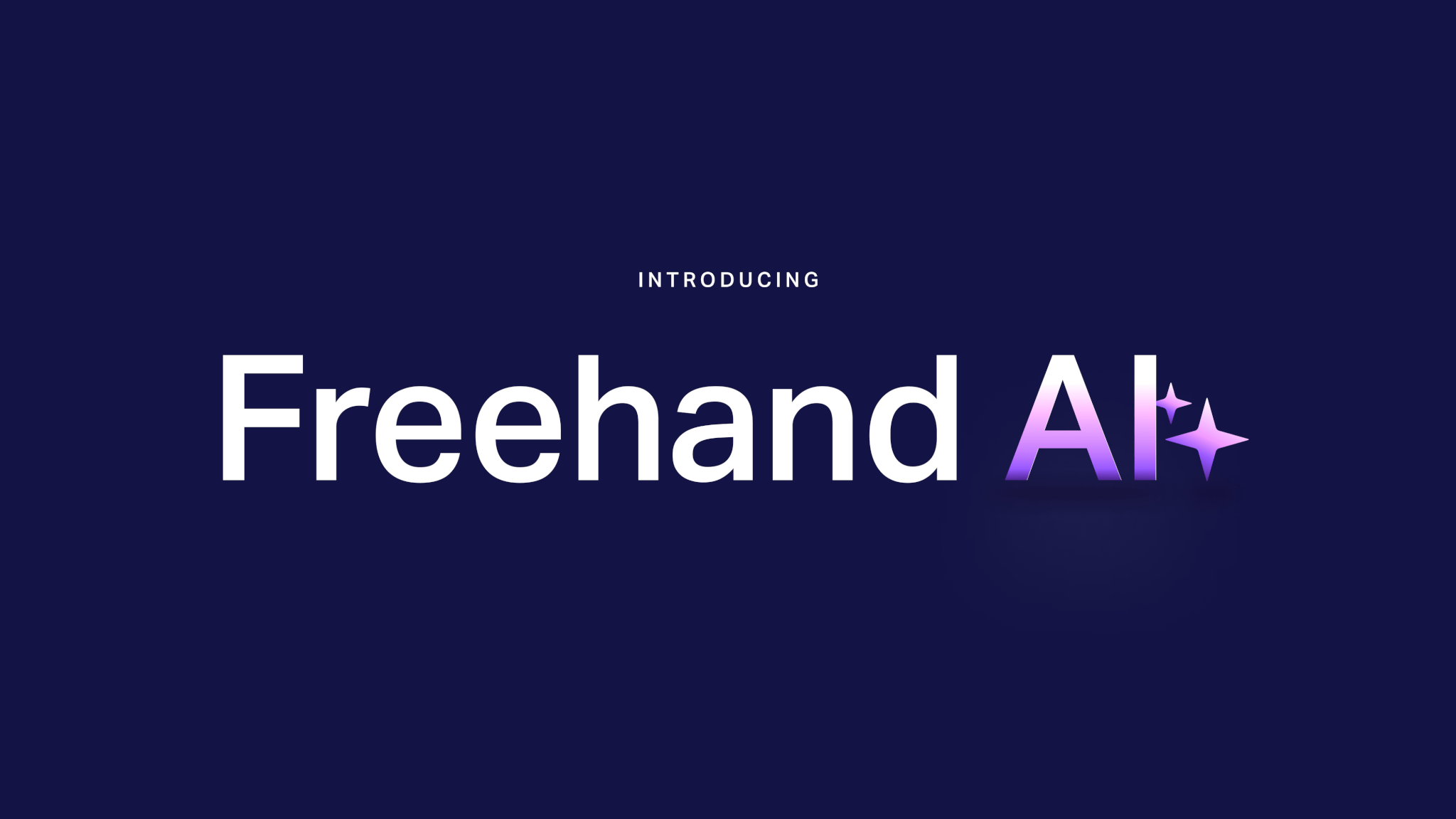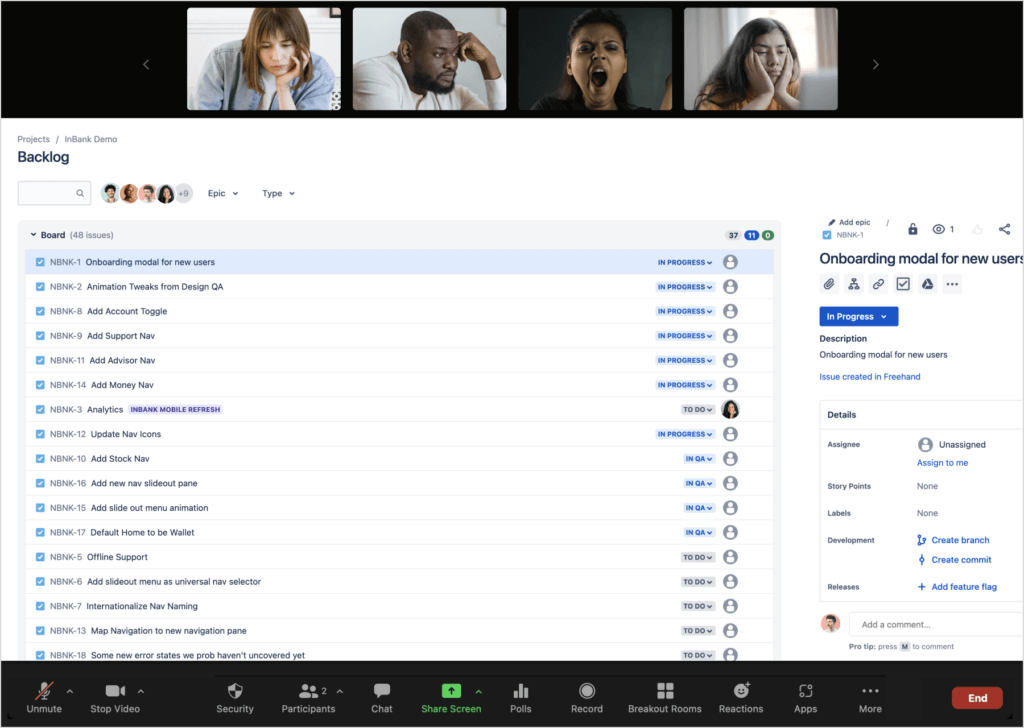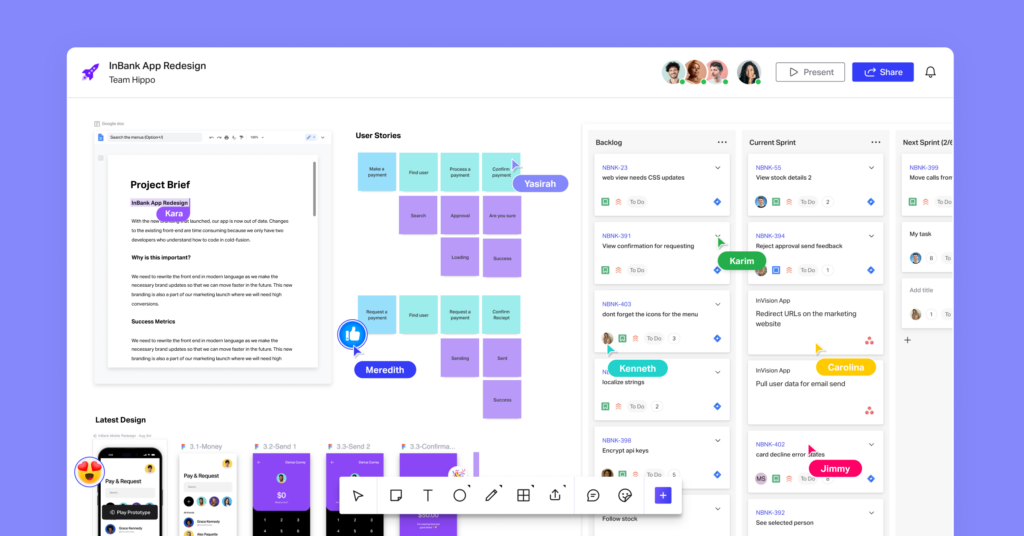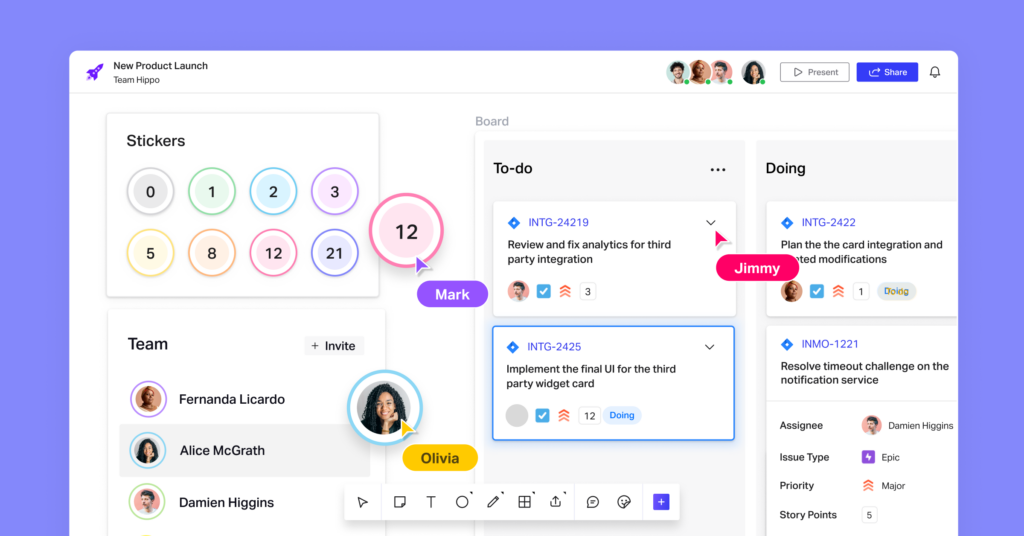
By Kosta Bolgov

Jake Reed

While it’s only been a few short weeks since Freehand by InVision launched the Intelligent Canvas, our customers are already rethinking how the Intelligent Canvas can help their teams to be more inclusive, engaged, and productive, particularly by leveraging Smart Workflows.
These new capabilities are a total game-changer for cross-functional collaboration and there’s no better example of how Smart Workflows can help teams do their work together than Sprint Planning.
Sprint Planning, also known as Iterative Planning Meeting (IPM), is a bi-weekly ritual where engineers, product managers, and designers come together to align on the goals and associated tasks for an upcoming sprint.
Every product team has their own unique approach to sprint planning, but the agenda generally includes: understanding and aligning on product priorities, reviewing designs, and sizing the effort of each task that needs to be completed.

This activity is often tedious, and with constant switching between different presenters and various point-solution tools, the process usually goes something like this:
For an activity where you need the full team engaged, today’s tools limit participation and require a lot of manual effort.
With Smart Workflows and powerful bidirectional integrations, Freehand is a one-stop-shop for sprint planning. Embed a live Google Doc (say goodbye to screen sharing), import inspectable design files from Figma, and add pre-existing backlog tasks directly onto the canvas. Give your team all of the context they need — all in one place.
As product goals and planning are underway, Freehand empowers everyone on the team to contribute. Whether you’re brainstorming ideas, risks or tasks that may not be accounted for yet with sticky notes, or digging deeper to find solutions, Freehand’s interactive canvas tools give teams the opportunity to problem solve together on-the-go.

Create a more seamless exchange between tools with less abrupt context switching without ever having to leave Freehand. With one click, you can convert sticky notes into tickets on your platform of choice (Jira, AzureDevOps, etc.), as well as edit the ticket data directly from the canvas. The ticket will remain up-to-date with real-time syncing in your source of truth tool.
As the team prioritizes tickets in the board view, Freehand’s new Smart Objects make it effortless to estimate and assign the work. Using the Story Point and People stickers, simply drag the stickers over the card to instantly edit their data (this works for native as well as third party cards). You can also connect a counter to add up story points in real-time. This makes it easy to see how close you are to reaching your sprint capacity goals in a glance. These tools not only save the team time, but encourage deeper, and more engaged interactions.

Inevitably in every Sprint Plan, there are moments of disconnect that teams need to resolve. By Sprint Planning on the canvas, teams can quickly resolve those issues. Be it uncovering missing tasks, or deciding which ticket to prioritize next, teams can quickly have a side session to find and implement a solution quickly.
Every team does Sprint Planning differently and it all depends on the type of project, level of rigor required or size of the team. With Smart Workflows, teams are empowered to leverage Smart Objects and connectors to make it their own. For example: if your team wants to do planning poker, use the flip card or polls to vote on points. Not only does this make the exercise more inclusive, but it’s a great way to have a little fun and engage with the team.
The more that teams feel engaged and included, the more effective Sprint Planning can be. Smart Workflows enable teams to do all of their work together directly on the canvas. Bidirectional integrations help to remove barriers like access to specialized tools so that the team is focused on the task rather than spending time screen sharing or copying and pasting work from other tools. By limiting the context switching and data searching in other applications, team members can fully immerse themselves in the work, which leads to deeper and more thoughtful decisions and increases overall engagement and productivity.
But teams first and foremost need to be included to be effective. Too often teams are excluded because the traditional per-seat pricing models of other Visual Collaboration tools discourage giving everyone the access they need. That’s why Freehand is inclusively priced (at 50% of Miro and Mural) to ensure that every cross- functional team member can be included — not just as a spectator but an active participant.
Smart Workflows in Freehand can make Sprint Planning a breeze through automation, integrations, and the real-time benefits of having the full team on the canvas. Try one of our pre-configured Sprint Planning templates – or create your own Smart Workflow, customized for your team.